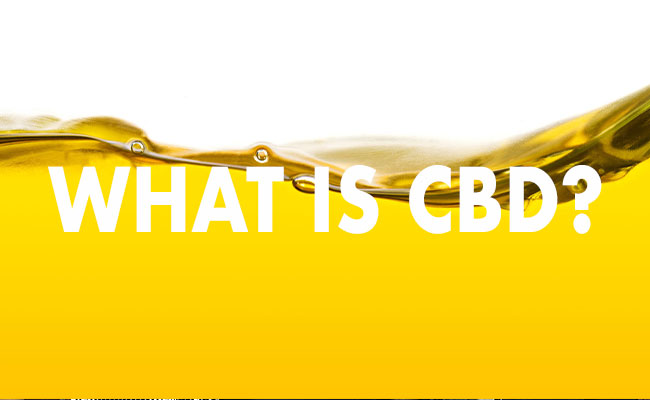
The Benefits of Hot Sauna & Cold Plunge
WRITTEN BY SHALINI RANA AND DR. SWATHI
We all have those busy weeks that leave us feeling completely drained by the time Friday rolls around. But, a good Sunday self-care day can offer a well-deserved chance to relax and recharge. One idea that you may want to implement on your next self-care day is taking a spa-day, and perhaps even hopping into the sauna. Something about the soothing hot steam and calm environment of a sauna can really make you feel at peace.
While Americans typically don’t use the sauna that often, people in Nordic countries (particularly Finland) incorporate the activity more frequently into their weekly routine. In fact, during their cold winter months, a common addition to a nice, long sauna bath is jumping into a cold body of water afterwards (a.k.a. taking a “cold plunge”). This sudden change in temperature from hot to cold may be a shock to the body at first, but the rush is thrilling (can anyone say anandamide?!), and once the body adjusts, it can feel like an instant reset. Let’s take a look at some benefits that may be the reason why this long-standing Finnish tradition is increasing in popularity around the world.
What are the benefits of the sauna?
Sauna bathing is a form of heat therapy that utilizes a high-heat, low humidity environment powered by either wood-burning, gas, electric, or infrared technology to heat the air [6]. The high temperature is meant to get your body sweating, promote pain relief of sore muscles, and dilate your blood vessels, thus reducing the amount of work that your heart has to do over a short period of time [5, 1]. On top of this, experiencing the sauna has shown to:
-
increase skin blood flow
-
improve microvascular and arterial function
-
lower blood pressure [5]
-
lower our body’s core temperature
-
improve the body’s tolerance to heat
These changes are all really good for the heart, as they reduce overall strain on the organ. But this isn’t even the best part; one study has shown that the sauna can have much greater benefits on cardiovascular health and even on neurological function over time.
A study conducted in 2018 looked at the cardiovascular effects of different frequencies of sauna durations. The frequencies spanned from once a week, 2-3 times per week, or 4-7 times per week. Sauna-session durations ranged from 0 to >25 minutes per session. Results showed that spending time in a sauna for any period of time between 5-20 minutes and/or for 1-3 times per week decreased the risk of sudden cardiac death and fatal cardiovascular disease. In groups that sauna-bathed more frequently (4-7 times per week) and for longer periods of time (>25 minutes per session), the cardiovascular benefit was maximized, showing greater decreases in risk of sudden cardiac death, coronary heart disease, and cardiovascular disease-related events.
Additionally, a follow up study tested the effects of sauna bathing on neurological diseases and found a 66% risk reduction for dementia and a 65% risk reduction for Alzheimer’s when involving sauna bathing 4-7 times a week compared to only once a week [1]. Therefore, if incorporated into your weekly routine several days a week for around 25 minutes a day, the sauna may improve cardiovascular function and may decrease the risk of memory disorders in the future.
What are the benefits of a cold plunge?
Cold plunges involve submerging your body into a cold temperature that is uncomfortable yet safe [6]. This type of cold-therapy is widely used among athletes (e.g. ice baths) for its potential aid in reducing inflammation, swelling, and soreness [7]. In addition, many Finnish swimmers revisit this activity frequently throughout the winter by taking swims in ice cold water, and it is said to be very enjoyable. But some important things to note about cold plunges are that they are not for everyone, and you should make sure that you are not at risk of developing heart problems due to the intense cold-exposure.
Cold-plunging induces an initial strain on the heart by increasing two things: peripheral vascular resistance and stroke work [1]. Ultimately, these two things increase the amount of work the heart has to do to pump blood out to the rest of your body. In the short run, the body’s homeostatic processes can help it respond to the change in temperature. For example, shivering and dilation of blood vessels brings warmth back to the body. But, for people with homeostatic dysfunction, high blood pressure, and other cardiovascular risks, cold plunging may do more harm to your body than good by making your heart work too hard to return your body to a normal temperature. So, it may be a good idea to talk to your doctor about cold-plunging before trying it out yourself.
If your body is healthy enough to tolerate the initial strain on the heart, cold plunging may be an activity worth trying. Benefits seen in Finnish swimmers [1] who have cold plunged for years involve:
-
stress-mediated improvements in vascular function over time
-
better adaptation to environmental stressors like extreme temperatures or even exercise
-
reduced thickness of skinfolds fat-burn of a type of fat in our body called brown adipose tissue (can lead to lower body weight)
Therefore, if you try out cold-plunging after making sure that it is right for you, you may find yourself experiencing numerous cardiovascular and weight loss benefits.
Hot Sauna/Cold Plunge Benefits and Drawbacks
As we discussed, participating in both a sauna bath frequently and taking a cold plunge can offer benefits individually. But what about doing these activities one after the other? The Finns have a long-standing tradition of combining both a sauna bath with an added cold plunge afterwards (this may involve going outside into the cold weather, sitting in the snow, taking a cold shower, or immersion into an ice-bath), and studies have shown that this combination has both physical and mental benefits.
If applied together over a long period of time, and if added to exercise, the hot sauna/cold plunge combination can:
-
reduce blood pressure
-
improve relaxation
-
increase sweating and reduce arterial stiffness
-
improve endothelial function
These can improve health outcomes such as lowering the risk of cardiovascular and all-cause mortality over time [2]. And, you get the benefits from sauna alone, which included reduction in risks for cardiovascular function and risks for neurological disorders, as well as the benefits of cold plunging alone, which included decreased risk of cardiovascular problems as well as a reduction in brown adipose tissue.
As for the effects on mental health, one study asked 500 Finnish winter swimmers about their thoughts about the sudden temperature changes. The questionnaire revealed that they felt that the sharp blend of sauna and ice-cold water elated their mood and mental well-being [4]. Some people even claimed that this process wipes out bitterness and makes you a more equanimous person. Clearly, the calming relaxation provided by this activity can introduce peace and serenity into stressful and chaotic lives, and that will always be a goal worth reaching towards.
Conclusion
Although there are mixed study results and possible damage to consider when deciding to partake in a hot sauna/cold plunge combination, the benefits can promote a healthy heart and a healthy mind. Also, there are potential benefits for preventing memory disorders and for weight loss. So try out these activities for that quick reset needed to start your week feeling refreshed and ready to take on anything, and continue the routine in order to boost your health over time.
Sources
-
Heinonen I, Laukkanen JA. Effects of heat and cold on health, with special reference to Finnish sauna bathing. Am J Physiol Regul. 2018;314(5):R629-R638.
-
Haddy FJ, Overbeck HW, Daugherty RM. The Functions of Resistance. Annu Rev Med. 1968;19:167-194.
-
Kauppinen K. Sauna, shower, and ice water immersion. Physiological responses to brief exposures to heat, cool, and cold. Part II. Circulation. Arctic Med Res.1989;48(2):64-74.
-
Dixon B. Saunas and serenity. BMJ. 1989 May 20;298(6684):1400.
-
Brawbaw K, Benton E, Martens A. 7 Sauna Benefits That Will Make You Want To Sweat In One Every Day. womenshealthmag.com. (May 10, 2022). https://www.womenshealthmag.com/health/a26446700/sauna-vs-steam-room-benefits/ Accessed 2022 Nov.
-
Cold Plunge Overview: What is it and why you should do it!. Bluecubebaths.com. Accessed Nov 2022. https://bluecubebaths.com/pages/cold-plunge-what-is-it-why-should-you-do-it-what-temperature-how-long#:~:text=A%20cold%20plunge%20is%20when,Fahrenheit%20(15%C2%B0%20Celsius).
-
Basil LM. 6 Health Benefits of Ice Baths. goodrx.com. August 30, 2022. Accessed November 2022. https://www.goodrx.com/well-being/alternative-treatments/6-ice-bath-benefits
–
This article was edited by Dr. Swathi and was written by Element Apothec Scientific Communications Intern, Shalini Rana. She is a Doctor of Pharmacy (PharmD) candidate at Rutgers University Ernest Mario School of Pharmacy in Piscataway, New Jersey.











